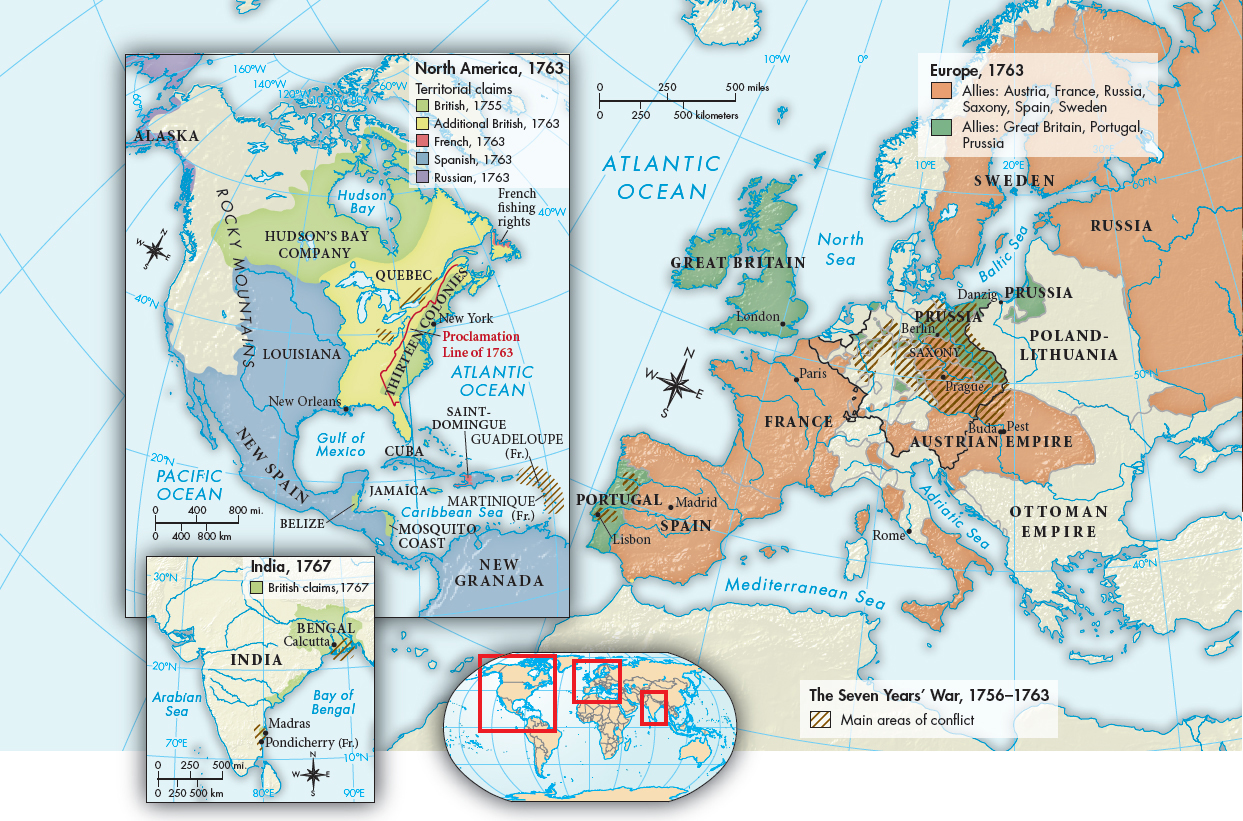The Seven Years’ War
The roots of revolutionary ideology could be found in Enlightenment texts, but it was by no means inevitable that such ideas would result in revolution. Instead events — political, economic, and military — created crises that opened the door for radical action. One of the most important was the global conflict known as the Seven Years’ War (1756–
The war’s battlefields stretched from central Europe to India to North America, pitting a new alliance of England and Prussia against the French, Austrians, and, later, Spanish. Its origins were in conflicts left unresolved at the end of the War of the Austrian Succession in 1748, during which Prussia had seized the Austrian territory of Silesia. In central Europe, Austria’s monarch Maria Theresa vowed to win back Silesia, and to crush Prussia. By the end of the Seven Years’ War, Maria Theresa had almost succeeded, but Prussia survived with its boundaries intact.
In North America the encroachment of English settlers into territory claimed by the French in the Ohio Valley resulted in skirmishes that soon became war. French forces achieved major victories until 1758, but the tide of the conflict turned when the British diverted resources from the war in Europe, using superior sea power to destroy the French fleet and choke French commerce around the world.
British victory on all colonial fronts was ratified in the 1763 Treaty of Paris. Canada and all French territory east of the Mississippi River passed to Britain, and France ceded Louisiana to Spain as compensation for Spain’s loss of Florida to Britain. France also gave up most of its holdings in India, opening the way to British dominance on the subcontinent (Map 22.1).

The war was costly for all participants and, in its aftermath, British, French, and Spanish governments had to increase taxes to repay loans, raising a storm of protest and demands for political reform. Since the Caribbean colony of Saint-
>QUICK REVIEW
How did imperial rivalries contribute to the outbreak of revolutions across the Atlantic world?